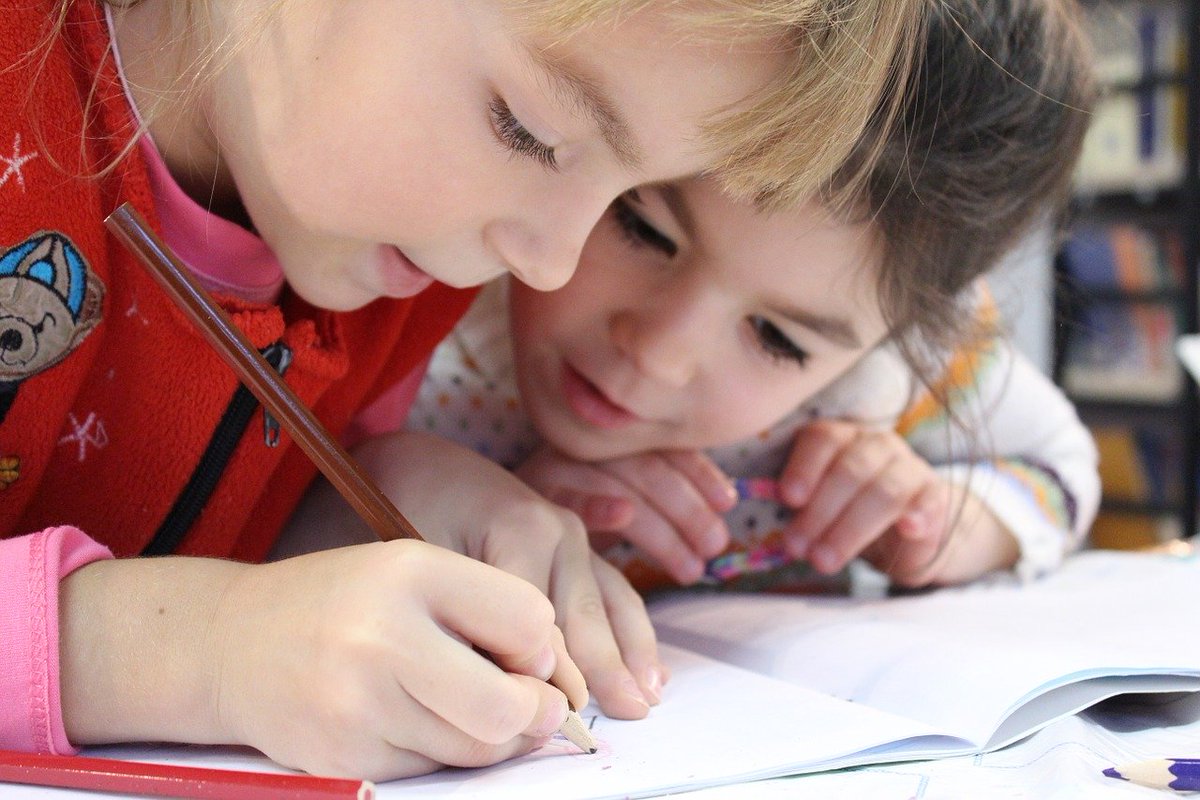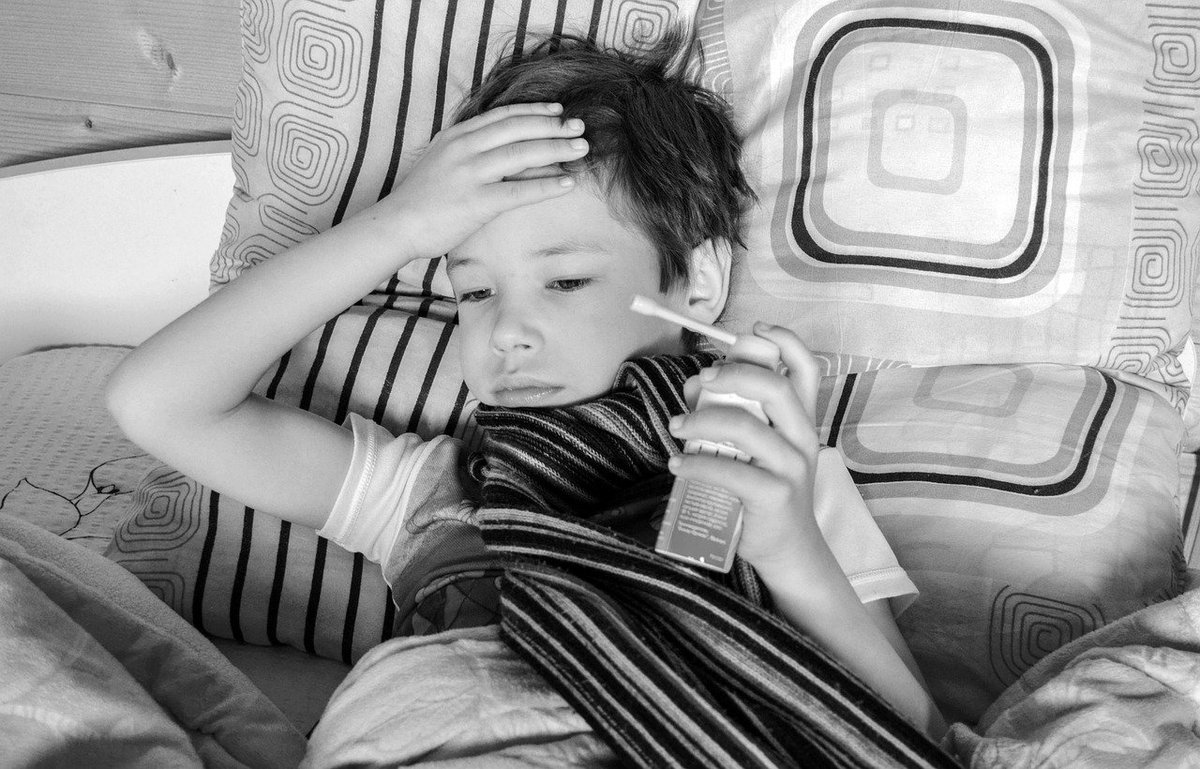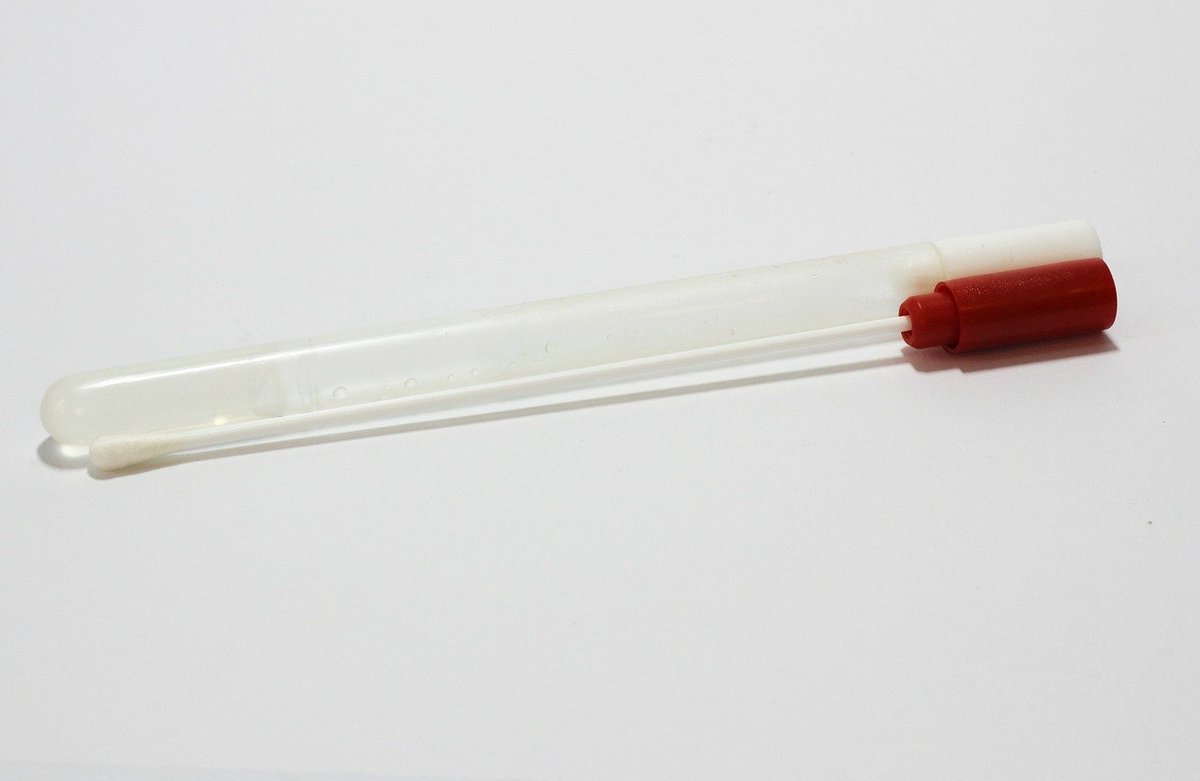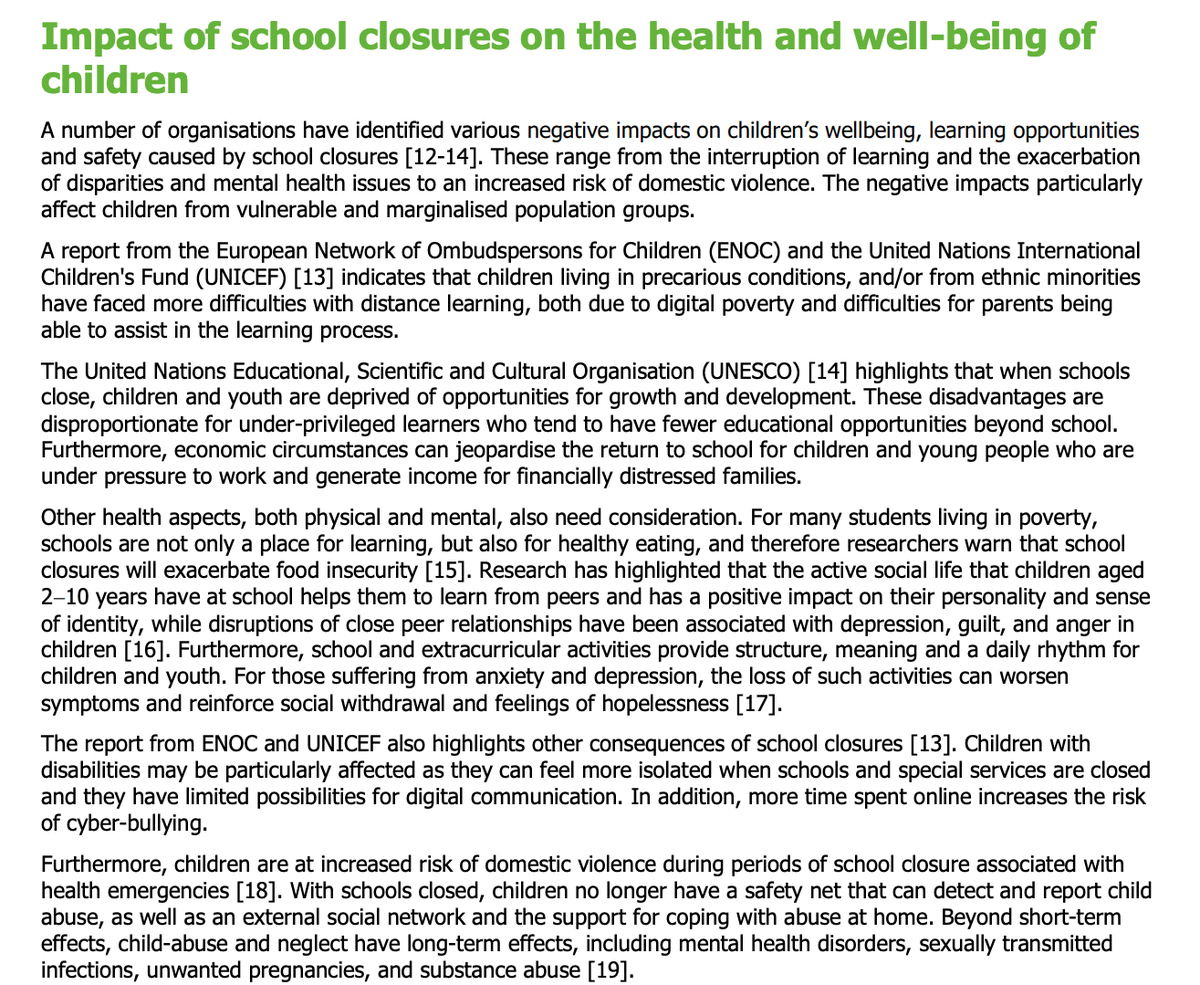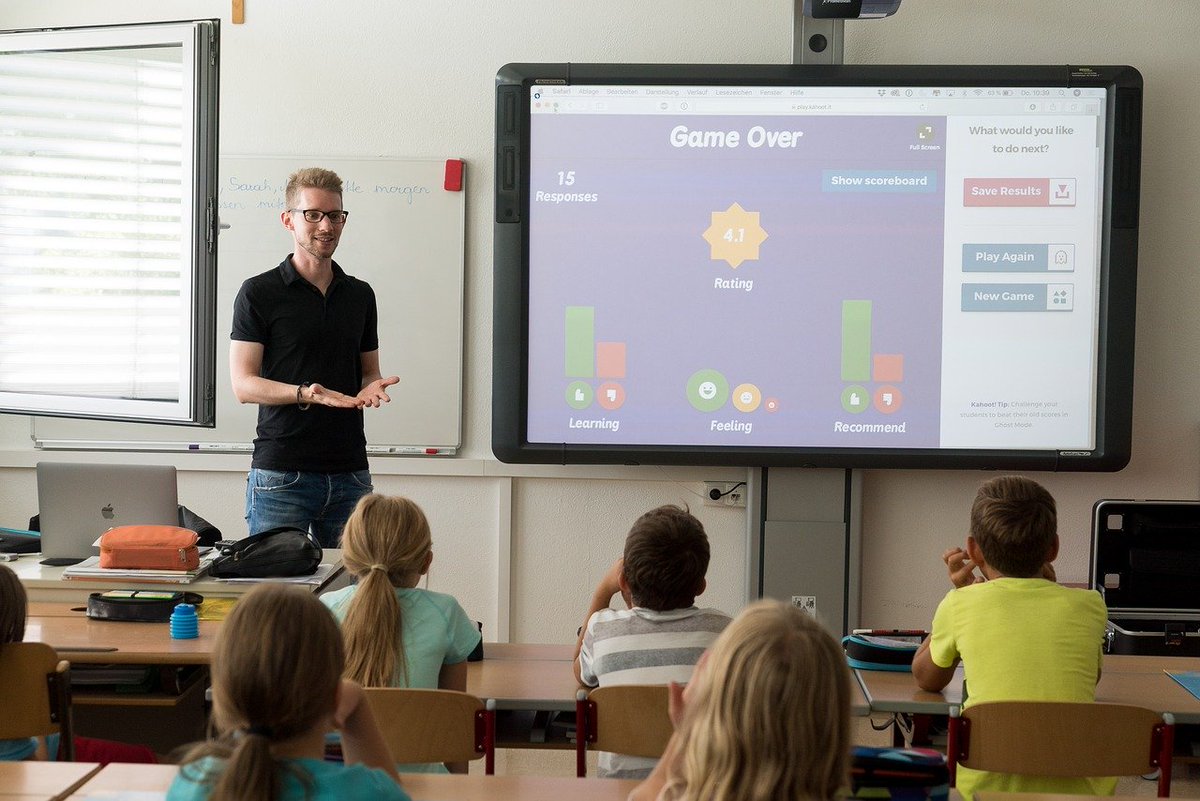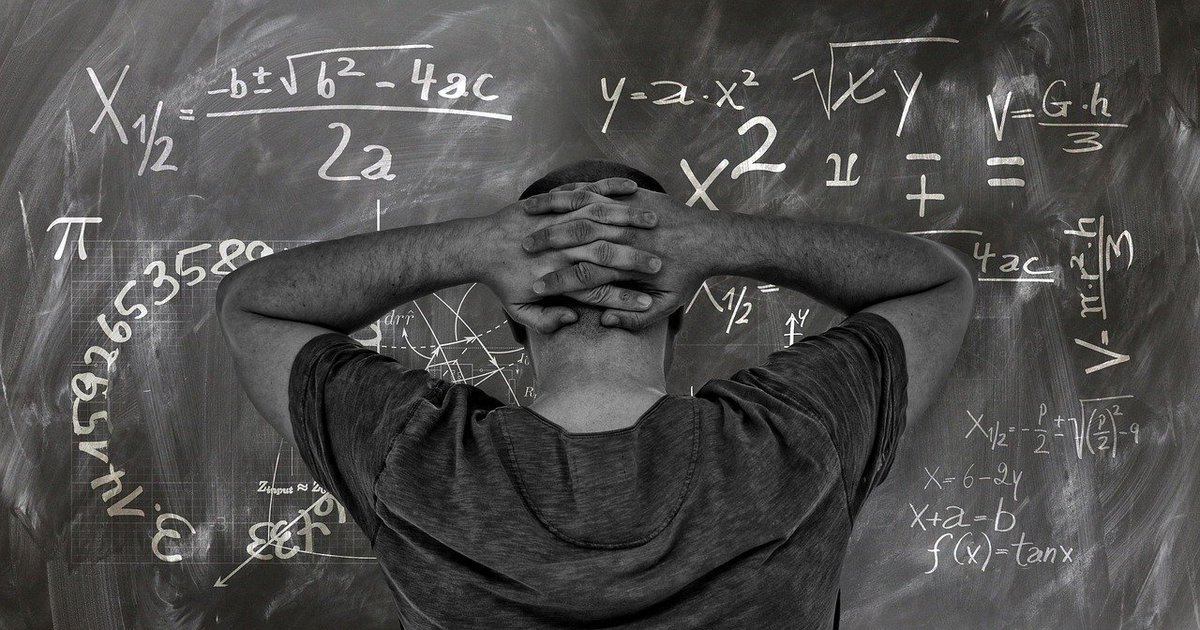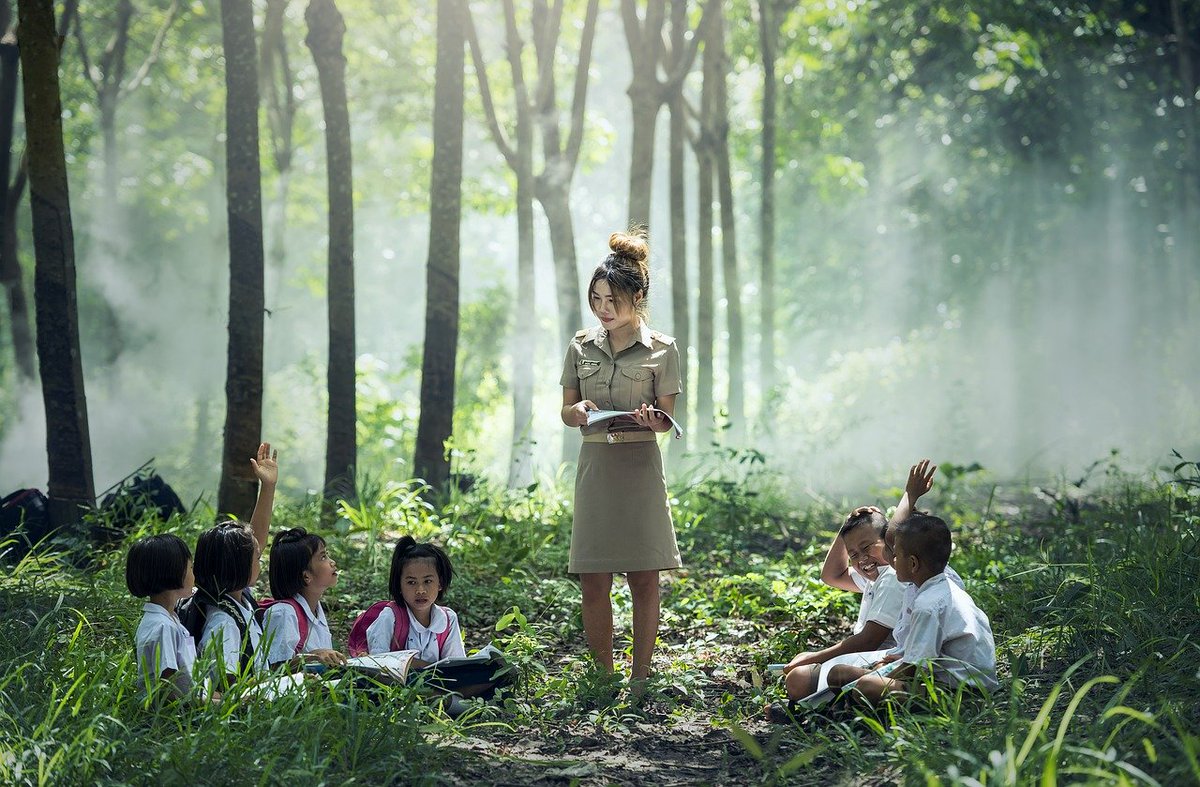A thread on #schoolsreopening schools and #COVID by a doctor (also a parent and a brother to a teacher) /1
Do children get coronavirus? Yes, although only very rarely get sick with it. How rarely is a difficult question to answer.
In terms of absolute figures in the UK there have been 3591 confirmed positive cases in 0-9yrs & 6880 in 10-19yrs. https://www.gov.uk/government/publications/national-covid-19-surveillance-reports">https://www.gov.uk/governmen... /2
In terms of absolute figures in the UK there have been 3591 confirmed positive cases in 0-9yrs & 6880 in 10-19yrs. https://www.gov.uk/government/publications/national-covid-19-surveillance-reports">https://www.gov.uk/governmen... /2
The number of children hospitalised with CV-19 aged 0-19 has been reported as 440. https://www.bbc.co.uk/news/health-52003804
Including">https://www.bbc.co.uk/news/heal... 71 children admitted to intensive care https://www.picanet.org.uk/wp-content/uploads/sites/25/2020/06/PICANet_COVID_report_2020-06-23_v1.3.pdf">https://www.picanet.org.uk/wp-conten... /3
Including">https://www.bbc.co.uk/news/heal... 71 children admitted to intensive care https://www.picanet.org.uk/wp-content/uploads/sites/25/2020/06/PICANet_COVID_report_2020-06-23_v1.3.pdf">https://www.picanet.org.uk/wp-conten... /3
Tragically, 7 children under 15yrs (including 2 under 1yrs) have died in England and Wales. #deaths-registered-by-age-group">https://www.ons.gov.uk/peoplepopulationandcommunity/birthsdeathsandmarriages/deaths/bulletins/deathsregisteredweeklyinenglandandwalesprovisional/latest #deaths-registered-by-age-group">https://www.ons.gov.uk/peoplepop... (Data from 15-44 isn’t available segmented) /4
We have also seen 78 ICU admissions of children with an inflammatory syndrome post-COVID : https://www.thelancet.com/journals/lanchi/article/PIIS2352-4642(20)30215-7/fulltext">https://www.thelancet.com/journals/... - 2 of which tragically died.
(Definition: https://www.rcpch.ac.uk/sites/default/files/2020-05/COVID-19-Paediatric-multisystem-%20inflammatory%20syndrome-20200501.pdf)">https://www.rcpch.ac.uk/sites/def... /5
(Definition: https://www.rcpch.ac.uk/sites/default/files/2020-05/COVID-19-Paediatric-multisystem-%20inflammatory%20syndrome-20200501.pdf)">https://www.rcpch.ac.uk/sites/def... /5
What % of children who get infected actually get sick? This is much harder to work out. A significant no. of children are asymptomatic when infected (up to 30%) and there is conflicting data about how infectious children are even when they are infected. https://www.ecdc.europa.eu/sites/default/files/documents/COVID-19-schools-transmission-August%202020.pdf">https://www.ecdc.europa.eu/sites/def... /6
It’s worth considering how a child ends up being labelled as a ‘case’? Firstly, someone must want to do the test - either because of symptoms, a contact, or random sampling. If you don’t have any of these then you could have a sniffly nose and never be counted in any study. /7
Once someone wants to do the test they either need to swab the nose/mouth or take blood. Swabs need to be done properly, to make you gag - self-testing is v. likely underestimating true positivity. In children this is even less likely to be done well. /8 https://www.youtube.com/watch?v=9WayjX6vCdk">https://www.youtube.com/watch...
Our initial swabs also weren’t very good - we’d miss 1-2 cases in 3 of every positive cases. Blood tests for antibodies are equally difficult, it may be that children don’t produce antibodies to COVID in the same way, making diagnosis even harder. /9
https://www.bmj.com/content/bmj/369/bmj.m1808.full.pdf">https://www.bmj.com/content/b...
https://www.bmj.com/content/bmj/369/bmj.m1808.full.pdf">https://www.bmj.com/content/b...
Large studies put the % of children getting severe or critical illness at around 5%. But again, this is based on how a ‘case’ is defined - if there are many untested infected children this could be far lower. We really don’t know. /10 https://www.thelancet.com/journals/lanchi/article/PIIS2352-4642(20)30177-2/fulltext">https://www.thelancet.com/journals/...
So from absolute numbers, severe illness in children IS very rare, but it is unclear exactly HOW rare. There was NO spike in UK excess deaths; #figuresntables">https://www.eurosurveillance.org/content/10.2807/1560-7917.ES.2020.25.28.2001239 #figuresntables">https://www.eurosurveillance.org/content/1... in the 0-14yrs. There WAS a spike in 15-44, but again we can’t see the data for 15-20yr. /11
So how likely are children to transmit the virus? In terms of children, there appears to be two distinct groups (0-10yrs and 10-19yrs) with the latter having similar if not higher transmission rates as adults IN THE HOME SETTING. https://www.ecdc.europa.eu/sites/default/files/documents/COVID-19-schools-transmission-August%202020.pdf">https://www.ecdc.europa.eu/sites/def... /12
Lots of studies looking at schools have been difficult to interpret as they are :
a) in countries with different prevalence of coronavirus
b) during lockdown measures
c) different definitions of what a “case” is (antibody positive, swab positive etc)
d) small numbers /13
a) in countries with different prevalence of coronavirus
b) during lockdown measures
c) different definitions of what a “case” is (antibody positive, swab positive etc)
d) small numbers /13
There have also been notable outbreaks amongst children and schools - whether these are isolated events or not remains to be seen. /14
https://www.eurosurveillance.org/content/10.2807/1560-7917.ES.2020.25.29.2001352">https://www.eurosurveillance.org/content/1...
https://www.eurosurveillance.org/content/10.2807/1560-7917.ES.2020.25.29.2001352">https://www.eurosurveillance.org/content/1...
On the other side there is significant harm to children missing school, although educational attainment isn’t the worst concern: food poverty, mental health impact and increased risk of abuse are far more important /15 https://www.ecdc.europa.eu/sites/default/files/documents/COVID-19-schools-transmission-August%202020.pdf">https://www.ecdc.europa.eu/sites/def...
Also noting, barring world wars, this hasn& #39;t happened before, with entire generations of kids missing chunks of schooling. Falling behind peers would not really be applicable if everyone was roughly in the same situation, although inequality exists between families. /16
So in regards to children:
1. The risk to their own health is small but real.
2. The risk of not going to school is significant as well.
What about teachers? /17
1. The risk to their own health is small but real.
2. The risk of not going to school is significant as well.
What about teachers? /17
Several small studies have suggested not much, although these were in primary and secondary schools as opposed to nurseries, where child-adult interactions are different. /18 https://www.ecdc.europa.eu/sites/default/files/documents/COVID-19-schools-transmission-August%202020.pdf">https://www.ecdc.europa.eu/sites/def...
But again, these are difficult to interpret studies:
a) Small studies
b) During COVID and with precautions
c) In settings with far LOWER endemic virus generally.
a) Small studies
b) During COVID and with precautions
c) In settings with far LOWER endemic virus generally.
Lastly is there a risk to the population? Modelling certainly suggests that schools being opened or closed does impact community transmission, but many European countries have opened with modifications and avoided increases. /19 https://www.bmj.com/content/370/bmj.m2743">https://www.bmj.com/content/3...
It’s difficult to compare so many of these countries with the UK because our endemic rate of virus is so much higher - all of the risks, for any activity, are exponentially lowered by better virus control. If we want to re-open safely and fully we must eliminate the virus. /20
Until then we should prioritise schools reopening over every other measure that increases transmission: pubs, mass gatherings, working in the office etc. Opening schools allows adults to work again as well, increasing productivity. /21
We should also be splitting schools into risk: nursery, primary and secondary, and taking very different approaches as each appears different in both child transmission risk and child/teacher interaction. /22
The government should be exploring every option on how to open schools safely, including additional staff and space to allow better social distancing and bubbling students inside, or greater time outside. Again, secondary schools could inc. masks and hand washing. /23
Lastly, informed consent is the bedrock of medicine - so let’s get past the sloganeering and start explaining things properly, so we can all make informed decisions for ourselves and our children. /24
(I humbly await Twitter& #39;s genteel feedback)
(I humbly await Twitter& #39;s genteel feedback)
ADDENDUM:
Although we have seen low mortality, it appears there is a significant long term impact of COVID ( #longCOVID ), the results of which we are yet to see in children and may not know the long-term effects (if any) for many years.
Although we have seen low mortality, it appears there is a significant long term impact of COVID ( #longCOVID ), the results of which we are yet to see in children and may not know the long-term effects (if any) for many years.

 Read on Twitter
Read on Twitter